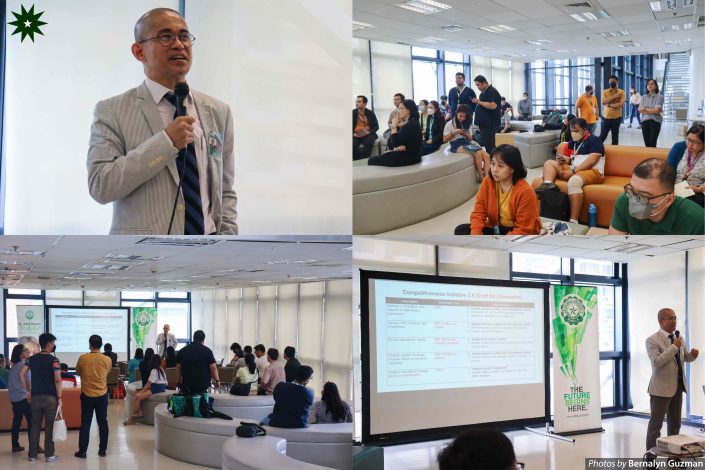Following DLSU’s drop to the 1501+ bracket in the Times Higher Education (THE) World University Rankings from the 1201 to 1500 bracket last year, University faculty and administrators convened in a town hall meeting to plan how DLSU can improve its rankings and strengthen its global competitiveness last October 4 at the fifth floor of Henry Sy Sr. Hall.
Vice Chancellor for Research and Innovation Dr. Raymond Tan attributed the drop to the growing roster of participating universities, which increased from 1,100 universities in 2018, the year DLSU joined, to 1,900 in the current year.

“THE ranks the top five percent of universities in the world and DLSU is at the bottom of that five percent,” Tan explained.
The THE World University Rankings assesses universities based on five key indicators: teaching quality accounts for 29.5 percent of the overall score, research environment for 29 percent, research quality for 30 percent, industry engagement for four percent, and international outlook for 7.5 percent.
While DLSU reached the annual requirement of having at least 150 publications to qualify in the list, Tan highlighted that DLSU’s decline in ranking primarily lies on the number of times these papers are cited by scholars globally. Preliminary reports show that DLSU is below world median level in all research quality and research environment indicators, where DLSU scored 31.3 and 12.8 percent, respectively.
“We must find a way, especially for those in the STEM disciplines, to be visible to the people inventing things and eventually turning them into products,” Tan said.
Faculty members suggested the revision of incentives and support for high-impact publications to target the areas of research quality and international outlook. Tan noted that collaborating with international co-authors in journals that center on local matters might be an effective move to enhance research visibility, which could lead to more highly cited publications.
“Having foreign co-authors is not a sign of weakness. We should see this as a sign of whether the research we’re doing is local-minded or trying to solve international issues,” Tan emphasized.
Recruiting international faculty as honorary professors and developing student exchange programs for research internships spanning one to three months were also suggested to target the same areas.
Improving PhD programs and scholarships was put forward to address the below-world-median standing of DLSU in doctorate-to-bachelor ratio and doctorate-to-staff ratio. Consultancy by faculty members to various industries through the University was also considered as a possible contributor to industry income. This metric forms part of the industry indicator that DLSU got a 17.4-percent rating in, a sharp decline from last year’s 36.9 percent.
Additional measures proposed to improve the University’s performance include institutionalizing a data-driven approach to research policy, negotiating upgrades of research requirements with the Association of Faculty and Educators of DLSU, and preparing a block grant proposal to the Commission on Higher Education for research expansion.
Tan expressed that DLSU will continue devising initiatives to remain competitive amid the increasing number of universities in the THE roster to avoid further decline in the rankings.
“It is a matter of prioritizing effort and being able to predict what effects and changes DLSU can make in the future,” Tan stressed.
